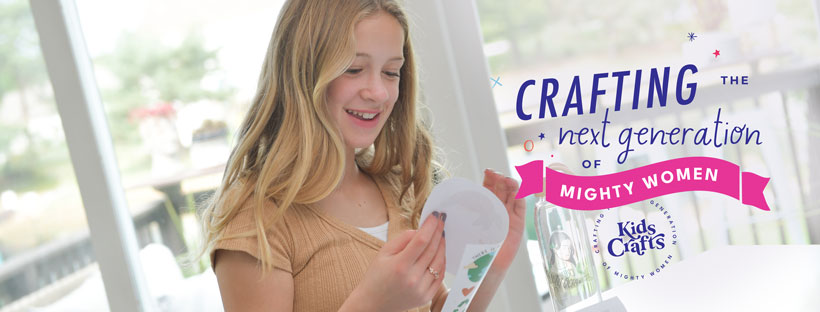Direct Link Between Women, Murals, and Positive Community Change
The first murals were in caves. The first paints were pigments from the earth. Early humans painted pictures of animals, hunts and illustrated the community experience of dancing around fires. They documented what happened while also capturing dreams for the future. Their wall arts were their stories, a practice today’s murals carry on thousands of years later. Creating significant public art sends a powerful message to everyone who sees it, directed at those who need to hear a message and even those who don’t want to listen.
Mural art has expanded and evolved to match the complexity of contemporary life. The public works offer an expression of human experiences that are both personal and universal—the shared themes of suppression, revolution, love, conflict, and general existential commentary.
Looking Up to Black Women
JilChristina Vest’s vision now belongs to her entire Oakland neighborhood community. Acutely aware of how often Black women and girls are overlooked in socio-political discourses, Vest wanted to change this narrative. She decided to have a mural painted on the side of her Oakland, California home in honor of the women in the Black Panther Party.
Titled #sayhername Women of the Black Panther Party Mural, the mural teaches viewers the names of over 300 women members of The Black Panther Party. It is unapologetically huge, and because of its sheer size, one can’t look at it without looking up to Black women.
Painted by muralist, painter, and creative director Rachel Wolfe-Goldsmith, the artwork has become a powerful centerpiece of the community, a meeting place, a gathering place, a destination, and sparks dialogue among spectators.
“People park their cars, get out and stand on the sidewalk and look up at the Black women on the wall,” Vest shares in an interview for The Guardian. “They take pictures in front of their images. The mural starts conversations on the sidewalk. Strangers introduce themselves to one another. They ask questions.”
Courageous Contributions
Over in San Francisco’s Mission District, visitors will find the MaestraPeace Mural. In 1971, visionary women transformed a four-story building into the first woman-owned and operated community center: The Women’s Building. Fifteen years later, in 1994, Bay Area muralists Juana Alicia, Miranda Bergman, Edythe Boone, Susan Kelk Cervantes, Meera Desai, Yvonne Littleton, and Irene Perez painted the MaestraPeace.
In addition to the seven muralists, almost 100 volunteers plus artist and calligrapher Olivia Quevedo donated hundreds of hours to paint the many women’s names that adorn the building. It serves as a visual testament to the courageous contributions of women through time and around the world.

A video shot when artists and volunteers restored MaestraPeace shows muralist Miranda Bergman reflecting on the work.
“We really wanted to do the mural, the collective of women that did it. It was for all the younger women and for all the generations to come and to honor those who came before us, well, so it could be here,” she says. “Of course, it’s not only for the women, it’s for all the men too. Men brought us flowers. They cooked us food. They cried because it was for their grandmothers. And so it was always meant as a healing act of love.”
Community Experience and Influence
You cannot paint in a public space and think people are not going to engage you. Justine DeVan, a mother of the contemporary mural movement, experienced firsthand that a mural’s process and final product are ingrained with community experience and influence.
In ART & DESIGN IN CHICAGO, she shares the account of a community at first trying to intimidate her because of a lack of understanding. For her mural Black Women Emerging, it was recommended DeVan paint on a wall located two blocks from A Time to Unite, a mural she’d completed with Calvin Jones and Mitchell Caton. DeVan didn’t know that the wall was a memorial listing the names of deceased members of the Blackstone Rangers, an influential South Side gang. At the end of her first week working, several Rangers approached the artist.
“They said they weren’t going to have women on the wall on top of their heroes – of course, they used the B-word,” DeVan recalls. “Then they said, ‘Our leader wants to meet you; you have to come with us.’ And I said, ‘No, I’m working…You tell him to come see me!”
Ultimately, after meeting with the each other and DeVan introducing herself and explaining the purpose of her work, the Rangers chose to support and protect her.
“I learned that they [the Rangers] were the protectors of a community: they protected young women from being beaten up and abused by their boyfriends,” DeVan says in her interview with ART & DESIGN. “They didn’t understand any other way of life and interaction with women. So it gave me an opportunity to introduce them to another kind of woman. I told them I had been to college and graduated, I was a parent – that fascinated them. I learned from them and they learned from me.”
Sparking Dialogue
Several decades later, Chicago multidisciplinary artist Sam Kirk uses her work to explore culture and identity politics. Kirk’s murals also address social issues. She intentionally uses the public space to spark dialogue around equality and visibility for women, communities of color, and the LGBTQIA+ community. One of her works, titled Searching for Mentors and Memories, is about being a female creative, specifically a Latina creative.
“For us, one of the main people we look up to is Frida Kahlo,” Kirk says in a video for CBC arts. “So she’s in the piece, but at the same time, it’s talking about the issue of not having any mentors or many mentors.”
A Visual Experience
We can all engage in the process of creating murals. Introduce the concept by engaging the girls in your life with this at-home project.
Materials:
- Large sheet of plastic
- Large drop cloth or large piece of plywood
- Traditional paint brushes, foam brushes, large spray bottles
- Large plastic plates
- Spray paint (depending on the age of your girl)
- Tempera paint
- Chalk pastels
- Fixative art spray or hairspray
- Clothing for everyone that you don’t mind getting stained with paint
Directions:
- Water down the tempera paint you’d like to use in the spray bottles so it will flow out easily
- Lay the large sheet of plastic down on the ground, then lay the drop cloth or plywood on top
- You and your girl(s) use the spray bottles and spray paint for your backdrop
- Let the backdrop dry overnight
- The next day put tempura paint on the large plastic plates so painters can easily dip brushes
- Paint
- Let the second layer dry overnight
- On the last day, finish the mural with chalk pastel details
- Spray the fixative art spray or the hairspray all over to “set” the mural
And if you don’t want to mess with paint, keep things simple with sidewalk chalk on a clear concrete or brick wall. What matters is the intent and message.
“Public art doesn’t belong to you,” Venezuelan muralist and speaker Daniela de Castro Sucre points out in her TEDx talk. “You can’t take it with you to your next exhibition. It belongs to the surface it’s painted on and to the people that see it every day. It becomes part of the community. Public art is so powerful that it can even change the fabric of a community.”
Written by Roxana Bouwer
Top photo by Carol M. Highsmith, submitted to Library of Congress
More Girls That Create Posts
Eight Ways to Help Your Daughter Find Her Voice

